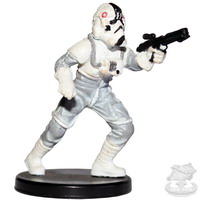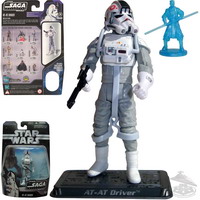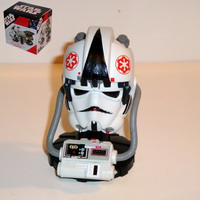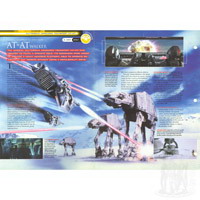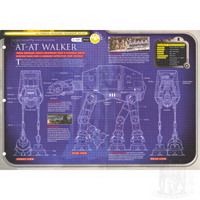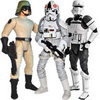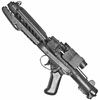|
Selected from hardened combat troopers, the Heavy Armor division of the Vehicle Command Crewers, also known as AT-AT pilots, were specialized soldiers that were trained to pilot the All Terrain Armored Transport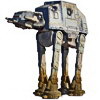 | AT-ATGround VehicleVehicles |
or other heavy armors in blatant "shock" tactics, attacking their enemy in plain sight after having landed at great distances from their intended targets. AT-AT drivers typically worked in teams of two, and they were in charge of everything from guiding the massive walkers over all types of terrain, to firing the AT-AT's powerful heavy laser cannons, to carrying out the orders given to them by the combat coordinator, who also occupied the cockpit. The task of guiding the walkers over uneven terrain was a difficult challenge, and to ensure that the pilots of these massive war machines were the best of best, they were put through many hours of simulation tests and similar instruction. Because of their armored cockpits and their commanding view of the battlefield, their training stressed their importance on the battlefield, which gave many pilots the idea that they were invincible. This enlarged ego led to many pilots developing an arrogant attitude when dealing with the infantry. They received their orders from a combat coordinator who was also stationed on the AT-AT's bridge.AT-AT pilots were very similar in appearance to Imperial TIE pilots | Imperial Starfighter Corps(Imperial Navy)OrganizationGalactic Empire Navy |
, though retained a color scheme that was reminiscent of the Phase II clone pilot | Clone PilotOrganizationGrand Army of the Republic |
attire, being a light grey flight suit complete with webbing, along with white gloves, boots and helmet, with the boots and overall suit in particular being insulated, and even possessing armor, although the armor was considered unnecessary by the Galactic Civil War. The helmet was reinforced, and bore the Imperial Army emblem on both sides. Although not required in the pressurized environment of an AT-AT cockpit, the operators at the controls of an AT-AT utilized life support gear that would ensure their survival in the event of a hull breach in a hostile environment, as well as out of respect for their combat history. The helmets were connected directly to vehicle's computer, allowing easy monitoring of its vital systems. A computer on their chest armor heated their suit and helmet, with controls to change the level of heat for the suit. The life support system also contained an identity chip, as well as an energy monitor, and connected to the helmet via pressurized air hoses. The suit also contained gear harnesses. The survival pack worn by these pilots was an advanced design which enabled the suit systems and heater to run off a single power pack via maximum output for up to five days without requiring a recharge. They wore driving gauntlets with a comlink on the left wrist for communication. These pilots were usually armed with a blaster pistol and grenades. The uniform also had an insulated variant that is worn when undergoing missions requiring venturing into frozen terrain such as on Hoth, as the AT-ATs themselves are not climate-controlled. Like all AT-AT crews, the pilots lived and worked in their machines over much of each mission. It was common for them to even involve themselves in the maintenance of the walkers, reinforcing the theory that the crew was an extension of the walker and vice versa.Read more... |
See also |



 Empire Strikes Back(MOVIE)
Empire Strikes Back(MOVIE)